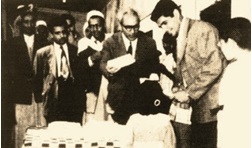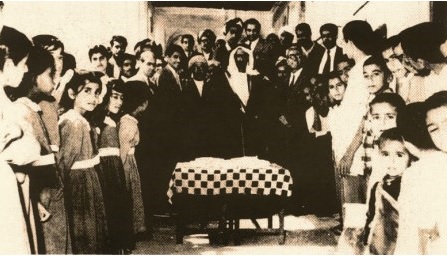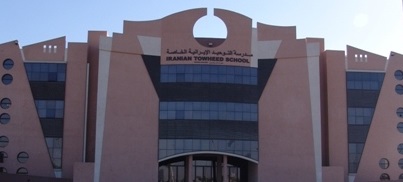History
The Historical Journey of the Establishment of the Supervision and Schools of the Islamic Republic of Iran in the United Arab Emirates
In 1957, exactly 14 years before the formation of the United Arab Emirates, Iranians residing in Dubai requested His Highness Sheikh Rashid, the ruler of Dubai, to establish an Iranian school for their children’s education.
After his approval and the issuance of a permit by the Ministry of Culture of Iran, a school named Dubai Iranian Elementary School was established in the emirate. The school operated in a small, old building provided by one of the Iranian traders, Mr. Haj Abdullah Kazem, to the Iranian Cultural Committee. Simultaneously, the Ministry of Culture of Iran began constructing a well-equipped building, which was completed in 1958, and the elementary school was relocated to this new location in the Bur Dubai area. In its first year, the school had six classes and about 210 boys and girls enrolled.
In the early years of the school’s supervision, the cultural responsibilities of the consulate were also managed by the Iranian school supervision. Later, the head of the Iranian schools in the UAE was appointed by the Ministry of Education, taking charge of the administration and development of Iranian schools across the emirates.
In the academic year 1971–1972, with the change in Iran’s educational system and the introduction of the guidance school (middle school) phase, the first middle school class was added to the Dubai Iranian School. The middle and high school continued operating at the same location. Gradually, the new secondary education system replaced the old high school system, offering specialized fields such as Mathematics and Physics, Experimental Sciences, Economics and Social Sciences, Banking Services, and Commerce.
See the school’s old photos:



From that point onward, the new educational system’s middle and high schools operated as a single educational unit under the name Dubai Iranian High School, functioning as a coeducational institution (boys and girls together).
In 1980, following the establishment of the Islamic Republic, the high school became gender-segregated, and an independent girls’ high school was established. From around 1980–1981, the high school continued its activities under the new name Shaheed Mohammad Baqir Sadr High School. Then, in 1983–1984, the middle school separated from it and continued its work under the name Dubai Iranian Boys’ Middle School.
It is unclear exactly when this middle school was renamed Bu Ali Sina Middle School, but evidence suggests that the name change occurred between 1983 and 1986. With the middle school’s independence, Shaheed Mohammad Baqir Sadr High School admitted 32 students into the auto mechanics program, thereby establishing a technical school alongside the high school. The technical school operated until 1988–1989, graduating 90 students in its fourth year, after which the technical school’s classes were closed.
The high school and middle school operated independently, with separate principals, only during the 1983–1984 academic year. After that, they were once again managed by a single principal until the 1991–1992 academic year. With the closure of the technical school classes, only the Mathematics and Physics, Experimental Sciences, Humanities, and Economics and Social Sciences streams remained active. In the 1995–1996 academic year, with the completion of the Salman Complex building, this section continued its activities as part of the larger complex.
After the segregation of male and female students in 1980 and the establishment of the girls’ high school, this school operated under the name Khadijah Kubra (S) High School. Around the same time, a girls’ middle school named Zahra (S) Middle School was established, and both the Zahra (S) Middle School and Khadijah Kubra (S) High School were run together as the Khadijah Kubra Educational Complex.
Along with the development of schools in Dubai, the Abu Dhabi Educational Complex was also established in 1970, coinciding with the formation of the UAE. Three years later, in 1973, the Sharjah School was founded in the Nuaimiya area of Sharjah, taking on the responsibility of educating Iranian students in the emirate.
Today, this school supervision manages the planning, organization, guidance, coordination, and oversight of four exemplary educational complexes and international schools, including:
The current Towheed boys Iranian National and International School
